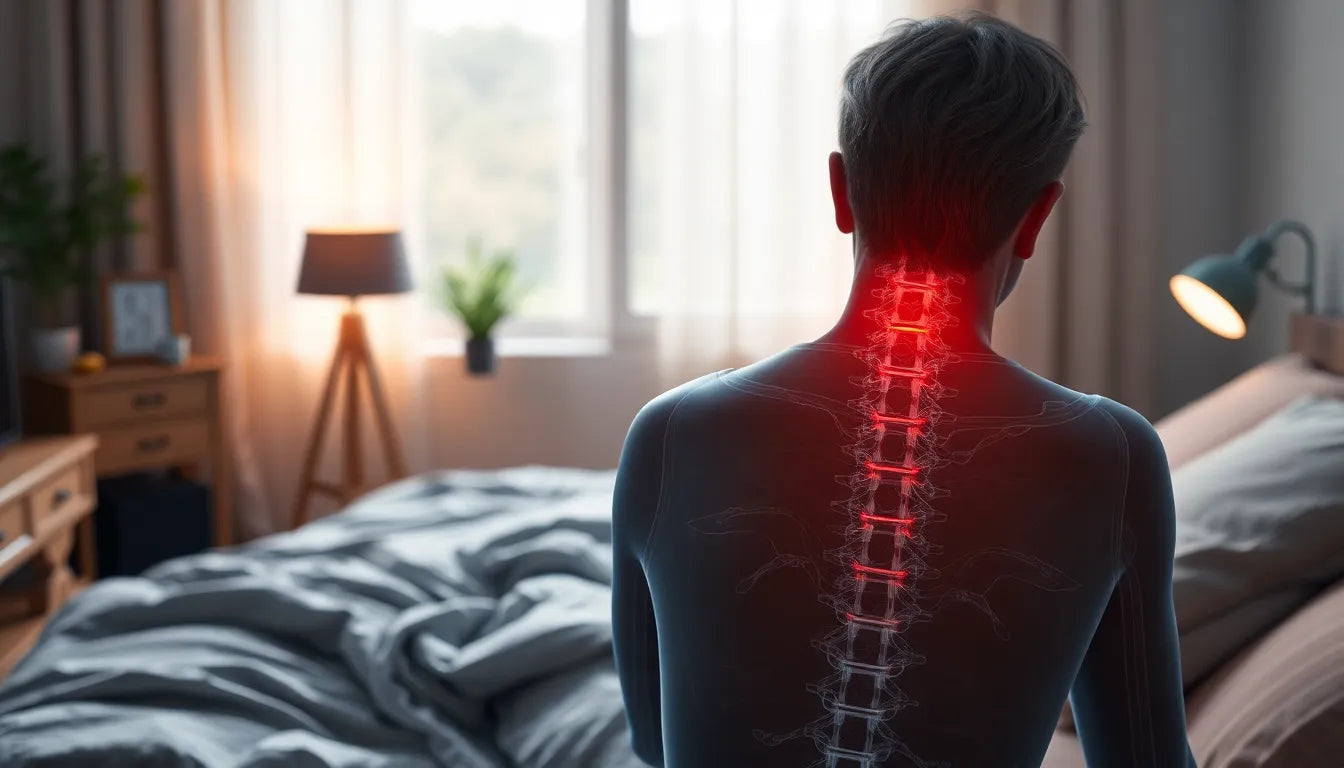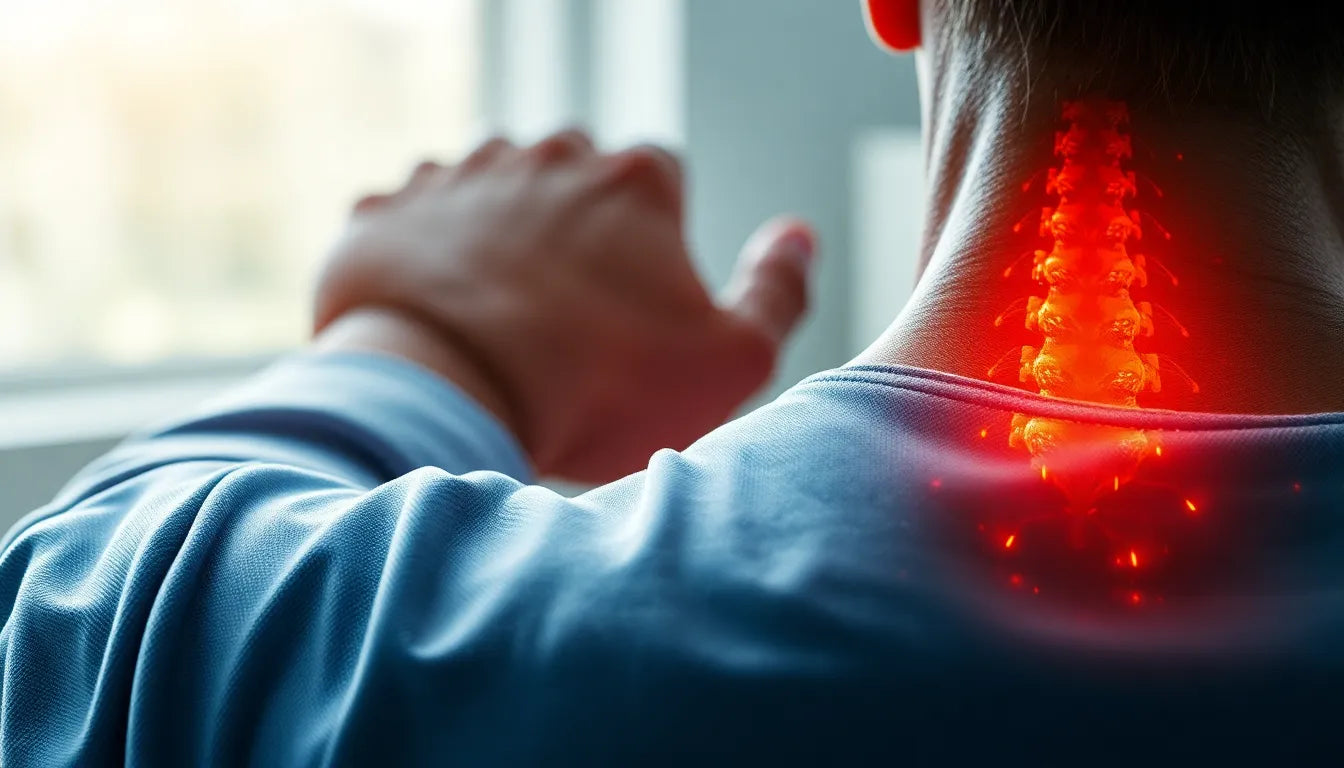Back pain is a common ailment, but when it persists or intensifies, it might be more than just a simple strain. One potential cause is a herniated disc, a condition that affects many adults worldwide. Understanding what a herniated disc is and recognizing its signs early is crucial for effective management and prevention of further complications.
Understanding herniated discs
A herniated disc occurs when the soft inner gel of a spinal disc pushes through a crack in the tougher exterior. This can irritate nearby nerves, leading to pain and discomfort. Herniated discs are prevalent, especially among adults aged 30 to 50, and their impact can range from mild discomfort to severe pain that disrupts daily life. Early detection is vital, as it can help prevent the condition from worsening and reduce the risk of long-term damage.
Importance of recognizing symptoms
Recognizing the symptoms of a herniated disc can be challenging, as they often mimic other common back problems. Many individuals may overlook or misinterpret these signs, attributing them to less serious issues like muscle strain. However, identifying the symptoms early can lead to timely intervention and treatment, potentially avoiding more invasive procedures down the line. If you've been experiencing persistent back pain, it might be time to consider whether a herniated disc could be the culprit.
Could your recurring back pain be more than just a muscle strain? Understanding the typical symptoms and seeking appropriate medical advice can be your first steps toward relief and recovery. In the next section, we'll delve deeper into the specific symptoms associated with herniated discs and how they can vary based on the disc's location.
Identifying common symptoms of a herniated disc
When it comes to understanding whether you might have a herniated disc, recognizing the common symptoms is crucial. One of the hallmark signs is a distinct pain pattern. This pain is often sharp or shooting, and it can radiate from your back down to your buttocks, thighs, calves, and sometimes even your feet. This is particularly prevalent when a herniated disc affects the lower back, leading to the well-known condition called sciatica.
Another symptom to be aware of is numbness and tingling. These sensations can travel along nerve pathways, extending into your arms or legs, indicating that a nerve may be involved. This can often lead to discomfort and a pins-and-needles feeling that is hard to ignore.
Muscle weakness is also a common symptom and can significantly affect your mobility. You might find yourself stumbling or having difficulty lifting items that were once easy to manage. This weakness occurs because the herniated disc can press on the nerves that serve these muscles, impairing their function.
It's important to note that symptoms can vary depending on the location of the herniated disc. For example, a herniated disc in the cervical spine might cause symptoms in the shoulders and arms, while one in the lumbar spine would affect the lower body. Understanding the location-specific symptoms can help in identifying the problem more accurately.
Counterintuitive facts about herniated discs
Interestingly, not everyone with a herniated disc experiences back pain. According to the University of Maryland Medical Center, some individuals may have a herniated disc without any back pain at all. This counterintuitive fact can make it challenging to diagnose the condition based solely on the presence or absence of back pain.
The diagnostic process for herniated discs
Diagnosing a herniated disc typically begins with a thorough medical history assessment. Your doctor will ask about your symptoms, their duration, and any activities that might exacerbate them. This step helps in narrowing down the potential causes of your discomfort.
Following the medical history review, a physical examination is conducted. Common tests include the straight leg raise test, which helps identify nerve root irritation. Reflex testing, muscle strength evaluation, and sensory tests for light touch, pinprick, and vibration are also part of the examination process. These tests help pinpoint the affected areas and assess the extent of nerve involvement.
In some cases, advanced diagnostic testing may be necessary. Imaging tests such as MRI scans are often considered the "gold standard" for diagnosing a herniated disc, as they provide detailed images of the spinal structures. X-rays can also be used to rule out other conditions, while CT scans offer a more comprehensive view of the spine. Less commonly, myelograms and nerve conduction studies may be conducted to further evaluate the condition.
Understanding these diagnostic steps can help you prepare for a doctor's visit and ensure you receive the appropriate care. Early diagnosis and intervention are key to managing a herniated disc effectively and preventing further complications.
Approaches to understanding herniated discs
When it comes to understanding herniated discs, various medical institutions offer comprehensive insights. For instance, the Mayo Clinic and Cleveland Clinic provide authoritative information, presenting symptoms, causes, diagnosis, and treatment options in a structured and clinically accurate manner. These resources emphasize the importance of seeking medical help when necessary and provide a complete overview of what patients can expect during diagnosis and treatment.
On the other hand, the University of Maryland Medical Center takes a more patient-centered approach. Their conversational style guides readers through common questions doctors might ask and highlights emergency warning signs, such as bowel or bladder issues that require immediate attention. This approach makes the information more accessible to the general public, ensuring patients are well-informed and prepared for medical consultations.
For those seeking detailed technical information, resources like Spine-health delve into specific diagnostic tests and offer educational content with medical literature references. This specialized spine resource approach is beneficial for individuals who want to understand the intricacies of their condition and the medical terminology involved.
Key differentiators in herniated disc content
One of the notable aspects of herniated disc content is the mention of asymptomatic occurrences. According to the Mayo Clinic, some individuals may have a herniated disc without experiencing any symptoms. This highlights the importance of regular check-ups and being aware of other subtle signs that might indicate a problem.
Another critical point is recognizing emergency indicators. Bowel or bladder dysfunction can be a sign of a severe condition called cauda equina syndrome, which requires immediate surgical intervention. Understanding these emergency signs can be lifesaving and underscores the importance of not ignoring unusual symptoms.
In terms of treatment, most sources agree that conservative approaches such as rest, physical therapy, and over-the-counter pain medications are often effective for herniated disc recovery. Surgery is typically considered only when conservative treatments fail to alleviate symptoms.
Frequently Asked Questions
What is a herniated disc?
A herniated disc occurs when the soft inner gel of a spinal disc pushes through a crack in the tougher exterior, potentially irritating nearby nerves and causing pain.
What are the most common symptoms of a herniated disc?
Common symptoms include sharp or shooting pain that radiates from the back to the extremities, numbness, tingling, and muscle weakness. Symptoms can vary based on the disc's location.
How is a herniated disc diagnosed?
Diagnosis typically involves a medical history assessment, physical examination, and advanced imaging tests like MRI scans to confirm the presence of a herniated disc.
Can a herniated disc heal on its own?
Yes, many herniated discs heal with conservative treatment such as rest, physical therapy, and pain management. However, severe cases may require medical intervention.
When should I see a doctor for a herniated disc?
Consult a doctor if you experience persistent back pain, numbness, tingling, or muscle weakness. Immediate medical attention is necessary if you have bowel or bladder dysfunction.
What are the treatment options for a herniated disc?
Treatment options include rest, physical therapy, pain medications, and in some cases, surgery. The approach depends on the severity of symptoms and individual patient needs.
Can ergonomic aids help with herniated disc recovery?
Yes, ergonomic aids such as supportive chairs, cushions, and proper posture techniques can help alleviate pressure on the spine and support recovery from a herniated disc.
Sources
- Mayo Clinic. "Symptoms and causes of herniated disk."
- Mayo Clinic. "Diagnosis and treatment of herniated disk."
- Cleveland Clinic. "Herniated Disk information."
- Penn Medicine. "Herniated Disc - Symptoms and Causes."
- University of Maryland Medical Center. "A Patient's Guide to Lumbar Herniated Disc."
- Spine-health. "Diagnosing a Lumbar Herniated Disc."
- Medical News Today. "Herniated disk: Causes, symptoms, diagnosis, and treatment."


















